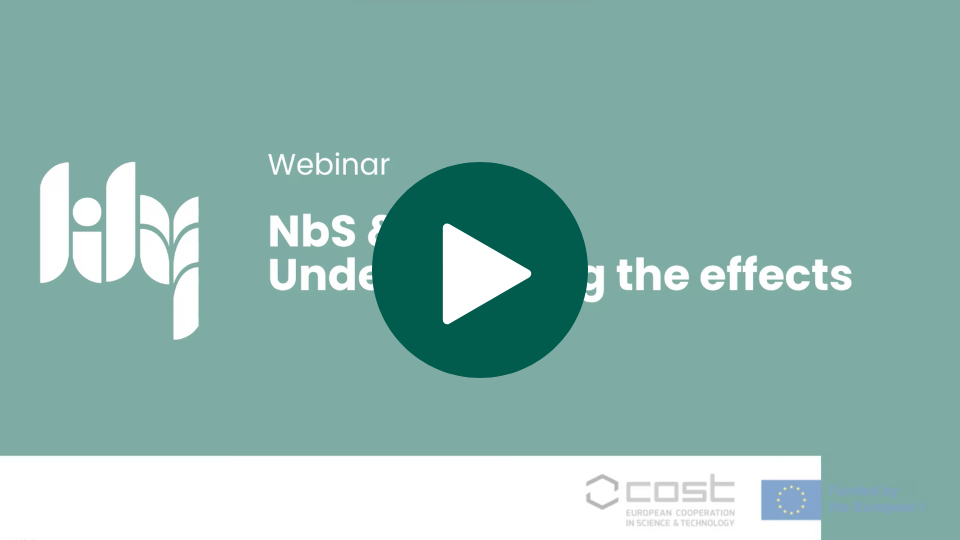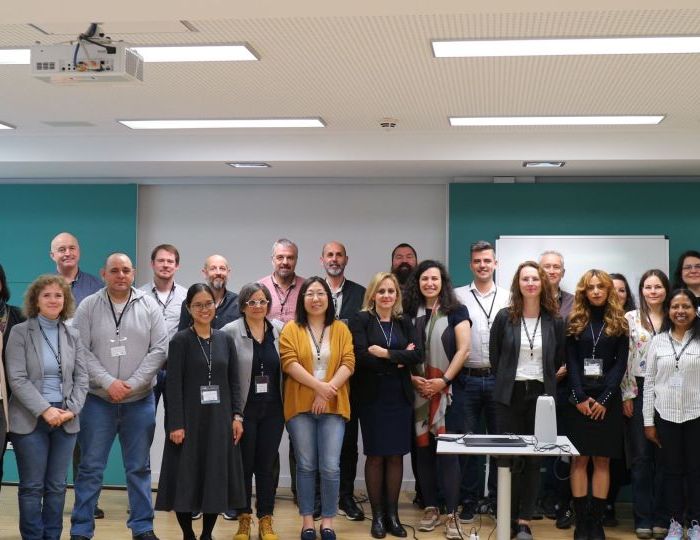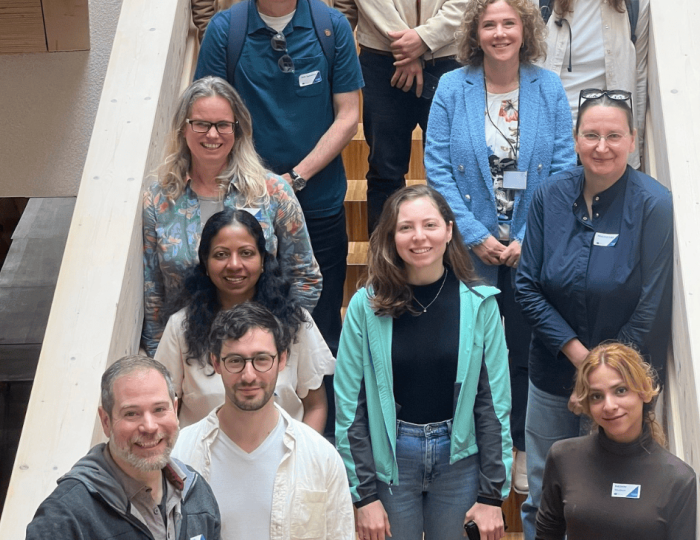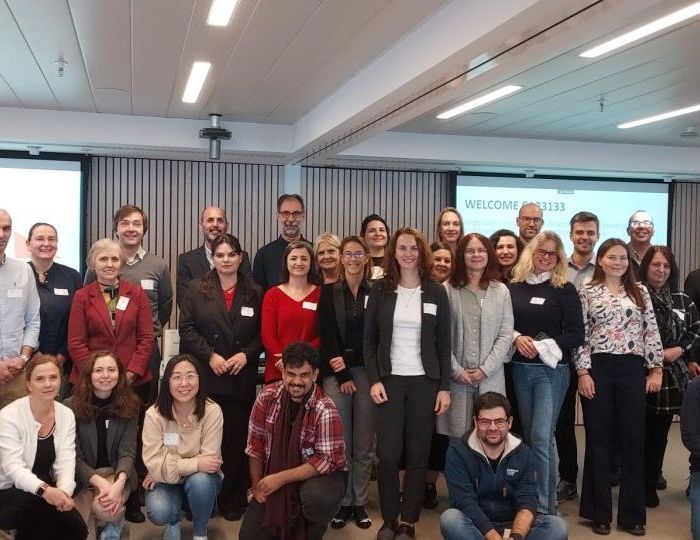The webinar “Nature-based Solutions and Health: Understanding the Effects” (8 October 2025), organised by the LILY COST project, brought together 5 researchers exploring how restoring and designing with nature can influence human and ecosystem health.
The session, attended by over 140 participants, was chaired by Marina Treskova and highlighted both the promise and complexity of linking ecological restoration with public-health outcomes.
The first speaker, Professor Frauke Ecke from the University of Helsinki, discussed trophic rewilding, an ecological restoration strategy that reintroduces or strengthens animal populations to restore top-down ecological functions. She showed how biodiversity can lower zoonotic disease risk through what is known as the dilution effect, in which more diverse animal communities reduce pathogen transmission among hosts. Examples included the reintroduction of beavers, whose dam-building improves forest and wetland health, and the catastrophic loss of vultures in India caused by veterinary diclofenac, which led to increases in rats and feral dogs and a surge in disease risk. Predators such as owls and raptors can also help by preying on infected rodents. However, Ecke emphasised that these benefits depend heavily on ecological context and social acceptance; conflicts with beavers or cultural beliefs about owls can undermine success unless local communities are involved.
The second presentation, by Dr Reina Sikkema of Erasmus Medical Center, examined water-based nature-based solutions in Rotterdam and their relationship to mosquito-borne diseases. Climate change and rising temperatures are expanding the range of vectors such as the Aedes aegypti and Aedes albopictus mosquitoes. Rotterdam’s climate-adaptation measures include urban water buffers and temporary flood zones. Field studies found that underground water-storage systems often contained stagnant water where Culex mosquitoes bred, whereas above-ground buffers presented lower risk. In experimental flooded nature areas, mosquito populations and certain bird species, especially corvids that can host West Nile virus, increased markedly, showing that adaptation measures may inadvertently create vector habitats. Sikkema argued that health and infectious-disease considerations are rarely built into climate-adaptation design and that multidisciplinary collaboration with virologists, urban planners, and social scientists is vital to anticipate and monitor such risks.
Dr Tadhg MacIntyre from Maynooth University shifted the focus to urban green spaces and human health. Drawing on large European projects such as GoGreenRoutes and GoGreenNext, he described efforts to measure the physical, psychological, and social co-benefits of urban nature using a “360-degree health” framework that integrates air-quality, noise, physical-activity, and mental-health data. In one case, Limerick’s new 1.4-kilometre greenway, co-designed with residents, was estimated to save around 55 lives each year through cleaner air and more active lifestyles. Across Europe, meeting the goal of accessible green space within a five-minute walk of homes could prevent about 43,000 premature deaths annually. MacIntyre stressed the need for citizen-science tools, inclusive design, and long-term evaluation to avoid inequality and “green gentrification.” Using locally adapted vegetation and modest aesthetics can maintain ecological value while reducing maintenance costs and displacement pressures.
Turning to the marine environment, Dr Jeroen van de Water of the Royal Netherlands Institute for Sea Research showed how oyster reefs and seagrass meadows can serve as nature-based defences against pollution and disease. Excess nitrogen and phosphorus from agriculture and sewage drive algal blooms, hypoxia, and pathogen proliferation in coastal waters. Oysters filter water and, through microbial denitrification around their shells, remove nitrogen from the system. Seagrass meadows, meanwhile, can significantly lower levels of fecal and pathogenic bacteria near shorelines. Studies suggest that their presence may reduce human cases of gastroenteritis by around 20 percent and improve shellfish safety and aquaculture yields. Combining oysters and seagrass restoration could therefore clean coastal waters, protect biodiversity, and enhance both marine and human health—a concept van de Water summarised as “protecting nature and people with nature.”
The final talk, by Dr Perlie Velasco of the University of the Philippines Los Baños, highlighted constructed wetlands as affordable, community-based solutions for water and wastewater management. These engineered systems replicate natural wetland processes such as sedimentation, microbial degradation, and plant uptake. In the Philippines, long-running examples include Bayawan City’s wetlands, which have treated domestic wastewater for over twenty years while reducing coastal pollution and sanitation-related illness. Velasco noted that constructed wetlands offer low energy and maintenance costs and can generate biodiversity and livelihood co-benefits, though they require adequate land and careful design. Current research under the EU Horizon “TULIP” project is exploring how such systems can also capture microplastics and antimicrobial-resistant bacteria. She advocated for a national policy framework, technical databases, and the integration of health-impact assessments into wetland planning to maximise social and environmental value.
In the concluding discussion, participants reflected on shared themes. Nature-based solutions deliver multiple health and ecological benefits but also carry potential trade-offs and unintended effects, especially in the short term. Long-term monitoring, risk assessment, and community participation were seen as essential. Speakers emphasised that evaluating NbS should include not only mental-health and recreation indicators but also biodiversity outcomes, infectious-disease dynamics, equity, and social inclusion. Overall, the webinar underscored that protecting human health through nature requires interdisciplinary science, local engagement, and careful design—recognising that ecosystems, societies, and wellbeing are deeply interconnected.
The organisation of the webinar was supported by Three o’clock and members of the LILY COST Action Working Group 4.





